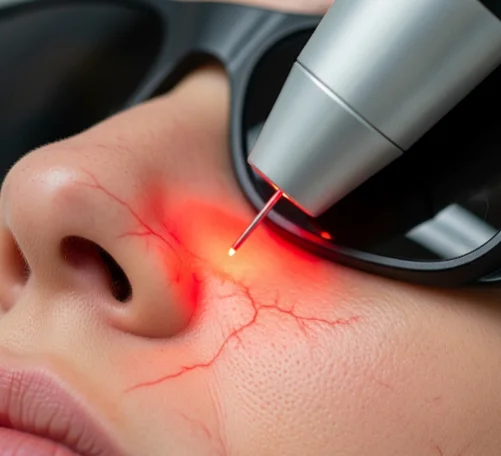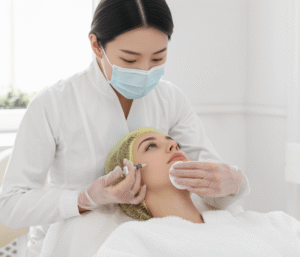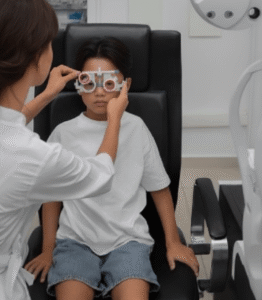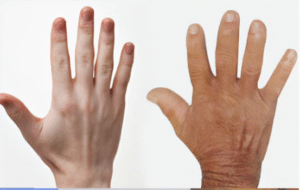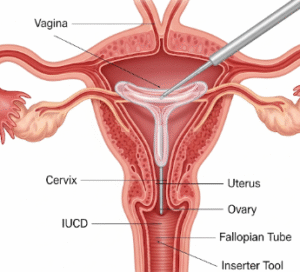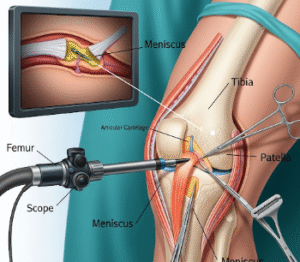Telangiectasia Removal in Korea is a highly advanced cosmetic and medical procedure focused on eliminating visible small blood vessels (spider veins or broken capillaries) that appear on the face and sometimes the body. These fine red, blue, or purple lines occur due to dilated capillaries near the skin’s surface. While they are harmless, many people seek treatment because they create a reddened, uneven complexion that can be difficult to cover with makeup.
Korea, globally renowned for its world-class dermatology care, offers cutting-edge solutions for telangiectasia removal. Using vascular lasers (Vbeam PDL, Nd:YAG, KTP), IPL/BBL light therapy, and specialized skincare programs, Korean dermatologists provide safe, precise, and natural-looking results. With Korea’s emphasis on clear, flawless skin, telangiectasia removal is one of the most requested vascular treatments.
What It Is
Telangiectasia are small dilated blood vessels visible under the skin, often caused by:
- Genetics.
- Sun exposure and UV damage.
- Aging and thinning skin.
- Rosacea and chronic facial redness.
- Hormonal changes or certain medications.
- Lifestyle factors (alcohol, smoking, extreme heat exposure).
They appear most often on the nose, cheeks, and chin, giving the skin a flushed or blotchy look.
In Korea, dermatologists treat telangiectasia with laser and light therapies that selectively target hemoglobin, collapsing the vessel while leaving surrounding tissue unharmed.
Why It’s Done
Patients pursue telangiectasia removal in Korea for:
- Aesthetic reasons → Achieve smooth, even-toned skin without visible vessels.
- Rosacea management → Control persistent facial redness and spider veins.
- Anti-aging goals → Broken capillaries can make skin look older and damaged.
- Psychological confidence → Patients feel more comfortable with clearer skin.
- Cultural ideals → In K-beauty, clear, calm skin is considered the standard of beauty.
Because telangiectasia rarely resolves on its own, professional treatment is the most effective solution.
Alternatives
If vascular laser treatment is not chosen, Korean clinics may suggest alternatives such as:
- IPL/BBL photofacials → Treat redness, pigmentation, and small vessels.
- Topical therapies → Creams with niacinamide or prescription vasoconstrictors (temporary effect).
- Lifestyle changes → Avoid alcohol, spicy food, and heat triggers that worsen redness.
- Camouflage makeup → Used for patients who prefer non-medical solutions.
However, for lasting results, vascular laser remains the gold standard in Korea.
Preparation
Preparation for telangiectasia removal in Korea includes:
- Consultation → A dermatologist evaluates the extent of visible vessels with imaging tools.
- Medical history → Patients disclose conditions like rosacea, clotting disorders, or medications.
- Pre-care → Avoid tanning, alcohol, and blood thinners before treatment.
- Skin conditioning → Using moisturizers and sunscreen strengthens the skin barrier before laser therapy.
Numbing cream may be applied for comfort, especially for larger treatment areas.
How It’s Done
A telangiectasia removal session in Korea usually lasts 20–40 minutes:
- Cleansing – Skin is cleansed of makeup and impurities.
- Numbing cream (if needed) – Applied for comfort.
- Laser or light application –
- Vbeam (Pulsed Dye Laser) → Gold standard for facial vessels.
- Long-pulsed Nd:YAG (1064 nm) → Deeper vessels, spider veins.
- KTP (532 nm laser) → Fine superficial vessels.
- IPL/BBL → Treats redness and pigmentation together.
- Cooling therapy – Protects skin and reduces discomfort.
- Post-care – Soothing masks, calming creams, and sunscreen are applied.
Most patients require 2–4 sessions spaced 4–6 weeks apart for complete clearance.
Recovery
Recovery from telangiectasia removal is generally quick:
- Immediately after → Mild redness, swelling, or a sunburn-like sensation.
- 1–3 days later → Some vessels may darken before fading.
- 1–2 weeks later → Visible reduction in broken capillaries.
Korean clinics enhance recovery with hydration facials, LED therapy, and calming ampoules. Patients are advised to use SPF 50+ sunscreen daily and avoid hot saunas, alcohol, or vigorous exercise immediately after treatment.
Complications
Telangiectasia removal is safe in Korea, but minor side effects can occur:
- Temporary redness, swelling, or bruising.
- Purpura (purple spots) after PDL, which fade within a week.
- Hyperpigmentation or hypopigmentation if sun protection is neglected.
- Rare blistering or scarring if lasers are used too aggressively.
Korean dermatologists minimize risks by using low-fluence multi-session treatments instead of aggressive single sessions.
Treatment Options
Korean clinics offer specialized telangiectasia removal programs:
- Vascular laser packages → Vbeam PDL, Nd:YAG, or KTP lasers.
- Rosacea control programs → Combined redness and vessel treatments.
- Comprehensive anti-redness programs → Laser + LED light therapy + calming facials.
- Brightening + vessel care → IPL/BBL photofacials with whitening ampoules.
- Multi-session packages → Clinics in Gangnam and Seoul offer affordable bundles for 3–5 treatments.
Conclusion
Telangiectasia Removal in Korea is one of the most effective ways to eliminate broken capillaries and facial spider veins, restoring a clear, even complexion. With advanced Vbeam, Nd:YAG, and KTP lasers, combined with soothing aftercare and preventive skincare, Korean clinics provide safe, natural-looking, and long-lasting results.
Backed by Korea’s world-class dermatology expertise and K-beauty philosophy of prevention and precision, patients can expect high-quality care tailored to their skin type. For those struggling with facial veins and redness, telangiectasia removal in Korea remains one of the best global treatment options.

